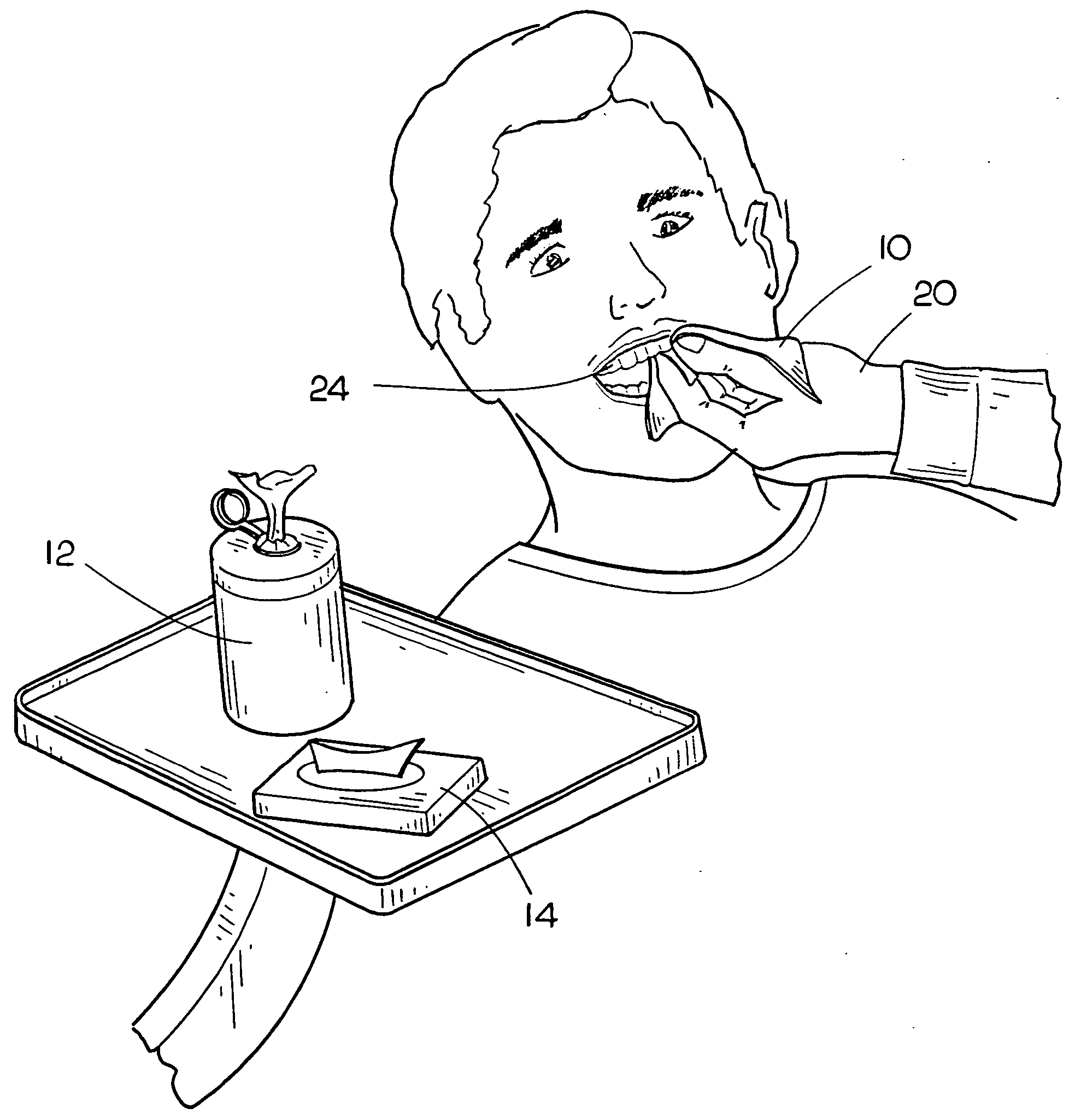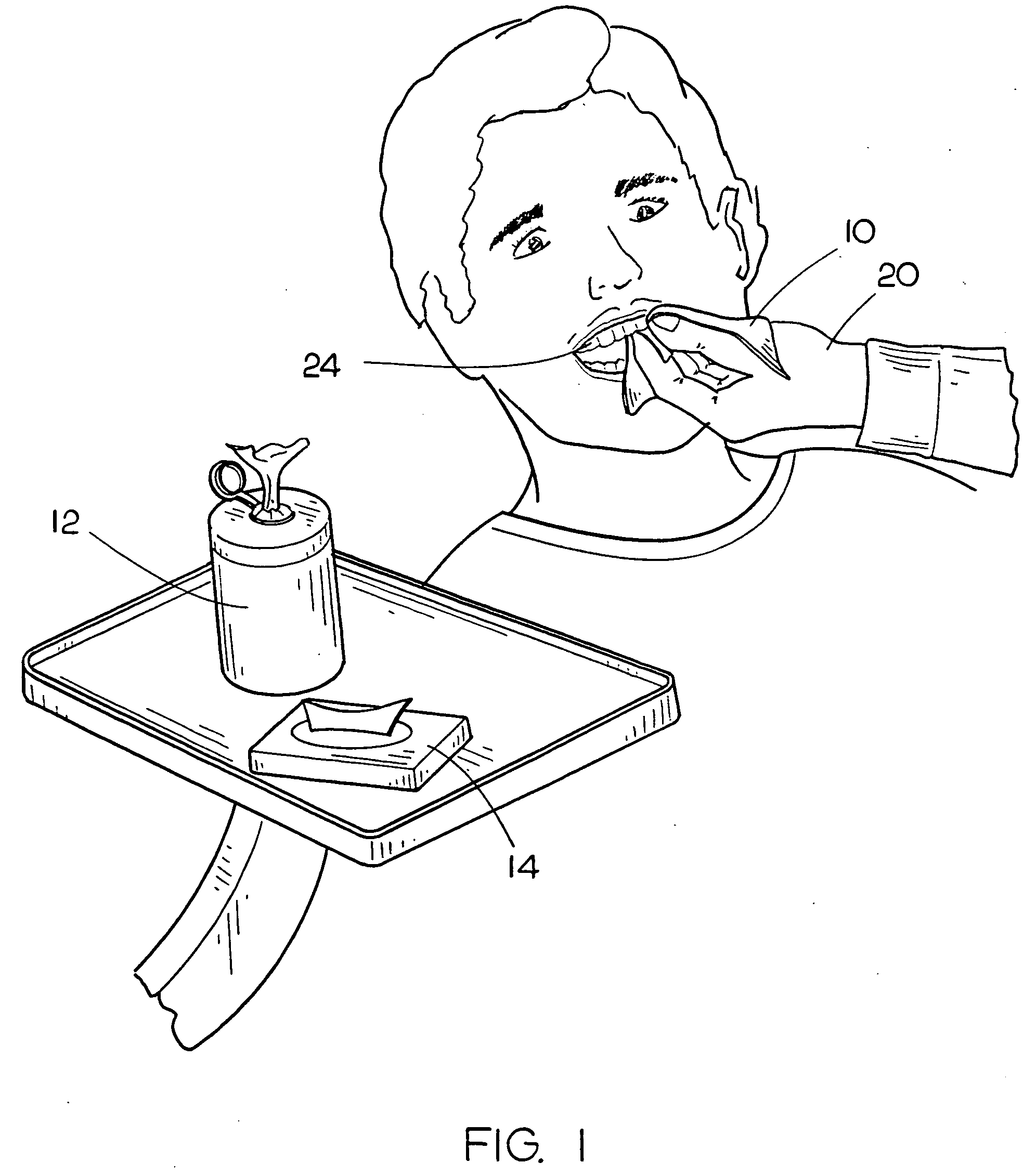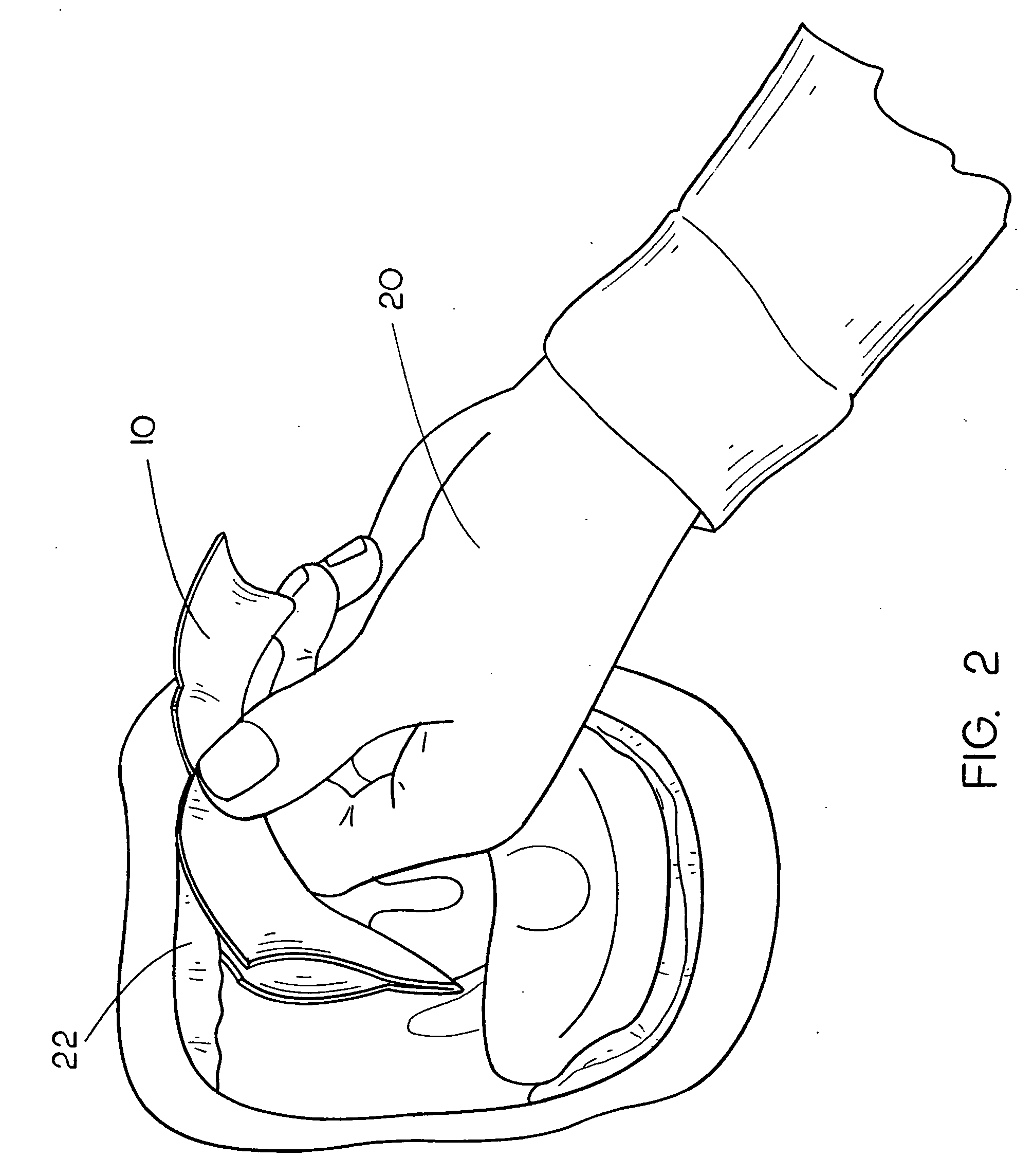Denture adhesive removal method
a technology for dentures and adhesives, applied in the field of denture cleaning methods, can solve the problems of not removing all of the adhesive material from the gums and/or dentures of the denture wearer, and the denture wearer encounters the same problem, and achieves the effect of convenient packaging
- Summary
- Abstract
- Description
- Claims
- Application Information
AI Technical Summary
Benefits of technology
Problems solved by technology
Method used
Image
Examples
Embodiment Construction
[0017] The denture cleaning method of the present invention is shown best in FIGS. 1-3 as including the following steps. First of all, the material which has been found to be most advantageous for removal of denture adhesive from both gum surfaces and from the dentures themselves is a material which is actually used in the formation of hairnet devices, specifically spunbound polypropylene. Spunbound polypropylene is a mesh material which is very thin and is formed in sheets by a spinning and extruding process such as that commonly used in connection with man-made fibrous materials. It is commonly used, as was stated previously, in connection with hairnets, but in connection with the method of the present invention, it is expected that the spunbound polypropylene would be formed into generally rectangular sheets 10 having dimensions of approximately three inches by five inches, the sheets 10 being stored within various types of dispenser packages 12 and 14 such as those shown in FIG....
PUM
 Login to View More
Login to View More Abstract
Description
Claims
Application Information
 Login to View More
Login to View More - R&D
- Intellectual Property
- Life Sciences
- Materials
- Tech Scout
- Unparalleled Data Quality
- Higher Quality Content
- 60% Fewer Hallucinations
Browse by: Latest US Patents, China's latest patents, Technical Efficacy Thesaurus, Application Domain, Technology Topic, Popular Technical Reports.
© 2025 PatSnap. All rights reserved.Legal|Privacy policy|Modern Slavery Act Transparency Statement|Sitemap|About US| Contact US: help@patsnap.com



